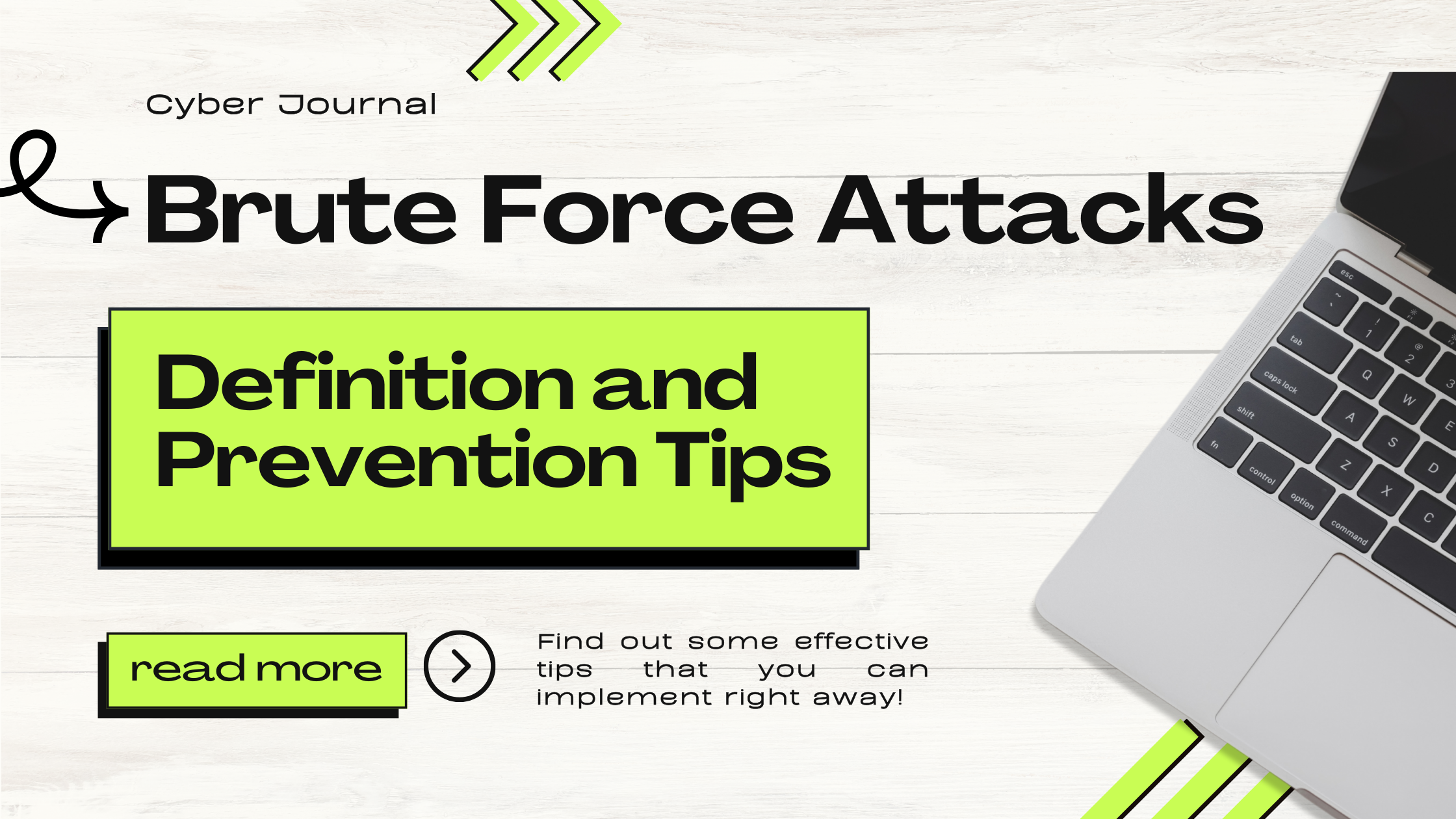Brute Force Attacks: Definition and Prevention Tips
 Ketty C.
Ketty C.
We're currently in the final phase of our school project, focusing on configuring and safeguarding virtual machines for an organisation to equip its employees for remote work. I'm specifically handling the implementation of brute force protection and wanted to provide a sneak peek of the details for a quick overview!
What Is a Brute Force Attack?
A brute force attack is a type of cyber-attack where an attacker tries to access user accounts by systematically guessing ID and password combinations. This process can involve mathematical methods, dictionary references, or other techniques, bombarding the account with login attempts until the correct credentials are found. While some attackers still perform brute force attacks manually, most are now carried out by automated bots.
How to Identify Brute Force Attacks?
Several actions that Indicate a brute force attack, such as:
👉Repeated login attempts:
A high number of failed login attempts within a short period often indicates a brute force attack
👉High resource usage:
Brute force attacks can cause significant CPU or memory usage on the targeted server due to the high volume of login attempts being processed.
👉Unusual network traffic:
A brute force attack generates a large amount of incoming traffic, which can be detected by monitoring network traffic patterns.
👉Suspicious IP addresses:
System logs may reveal suspicious IP addresses that repeatedly attempt to connect to the server.
5 Types of Brute Force Attacks
Each brute force attack might use various tactics to uncover confidential information. Any of the following common brute force techniques could be used against the intended victim:
💥Simple (Traditional) Brute Force Attack
In this method, the attacker guesses numerous passwords to target specific identities, repeating the process until a match is found. This approach is resource-intensive and time-consuming, as it requires generating every possible character combination, making it more effective for short credentials.
💥Dictionary Attacks
This method uses large predefined collections of popular phrases or terms to guess passwords. Attackers may enhance their wordlists by researching their targets' online activities, such as blogs or social media profiles, to identify potential password patterns based on hobbies or interests.
💥Hybrid Brute Force Attacks
Hybrid attacks combine two techniques, such as a dictionary attack with a traditional brute force attack. This method involves using common words from a dictionary and substituting characters with numbers or symbols, making it more effective than using either technique alone.
💥Reverse Brute Force Attacks (Password Spraying)
Also known as credential spraying, this attack involves using a few common passwords to guess multiple potential identities. The attacker cycles through a list of user IDs with these predetermined passwords, making it particularly dangerous for businesses with employees who don’t use strong, unique passwords.
💥Credential Stuffing Attacks
In credential stuffing, a cyber criminal repeatedly tries known passwords (obtained from data breaches) on multiple websites. Using botnets to automate the process, attackers exploit the common habit of password reuse across different sites, often leading to successful account compromises.
Some Effective Ways to Prevent Brute Force Attacks
⚙️Set Complex Passwords
It is essential to implement a strong password policy that requires users to use complex passwords with a mix of letters, numbers, and special characters. Additionally, enforcing a lockout policy can help deter attackers by locking out user accounts after a certain number of failed login attempts.
Detailed steps can be found in this article:
⚙️Enable SSL/TLS Encryption
Using SSL/TLS encryption for internet browsers can protect sensitive data during transmission, making it harder for attackers to intercept login credentials.
Detailed steps can be found in this article:
⚙️Restrict Root SSH Login
Another preventive measure is restricting root SSH login, as this reduces the risk of unauthorised access to the system by limiting login privileges.
Detailed steps can be found in this article:
⚙️Consider Using Next Generation Firewall
Utilise Intrusion Detection Systems (IDS) and Intrusion Prevention Systems (IPS) to identify potential threats and take action against them automatically. Restrict access by allowing only specific IP addresses to connect to sensitive systems or services. Continue to monitor your network closely for any unusual behaviour or attempts at brute force attacks.
Additionally, if you want to add more security layers to web apps, consider using a Web Application Firewall (WAF) to filter and monitor HTTP traffic between a web application and the internet, providing an additional barrier against malicious activity. Regularly update all software and systems to patch any vulnerabilities that could be exploited by attackers. By combining these strategies, you can significantly reduce the risk of falling victim to brute force attacks.
⚙️Implement MFA/ 2FA
Lastly, implementing Multi-Factor Authentication (MFA) or Two-Factor Authentication (2FA) for an added layer of authentication is also highly recommended, making it harder for attackers to gain unauthorised access.
Brute force attacks pose a significant cyber security threat, targeting user accounts through relentless guessing attempts. By understanding the various types of brute force attacks and implementing robust preventive measures, such as complex passwords, encryption, restricted access, firewalls, regular updates, and multi-factor authentication, organisations can strengthen their defences and mitigate the risk of unauthorised access.
I hope you find this brief overview helpful and take away some tips that you can implement right away!🔥
Subscribe to my newsletter
Read articles from Ketty C. directly inside your inbox. Subscribe to the newsletter, and don't miss out.
Written by

Ketty C.
Ketty C.
I'm a junior cyber risk analyst just starting my journey in cybersecurity. I have been studying cybersecurity, participating in CTFs and other competitions, self-learning programming, and hustling on projects during nights and weekends.👾